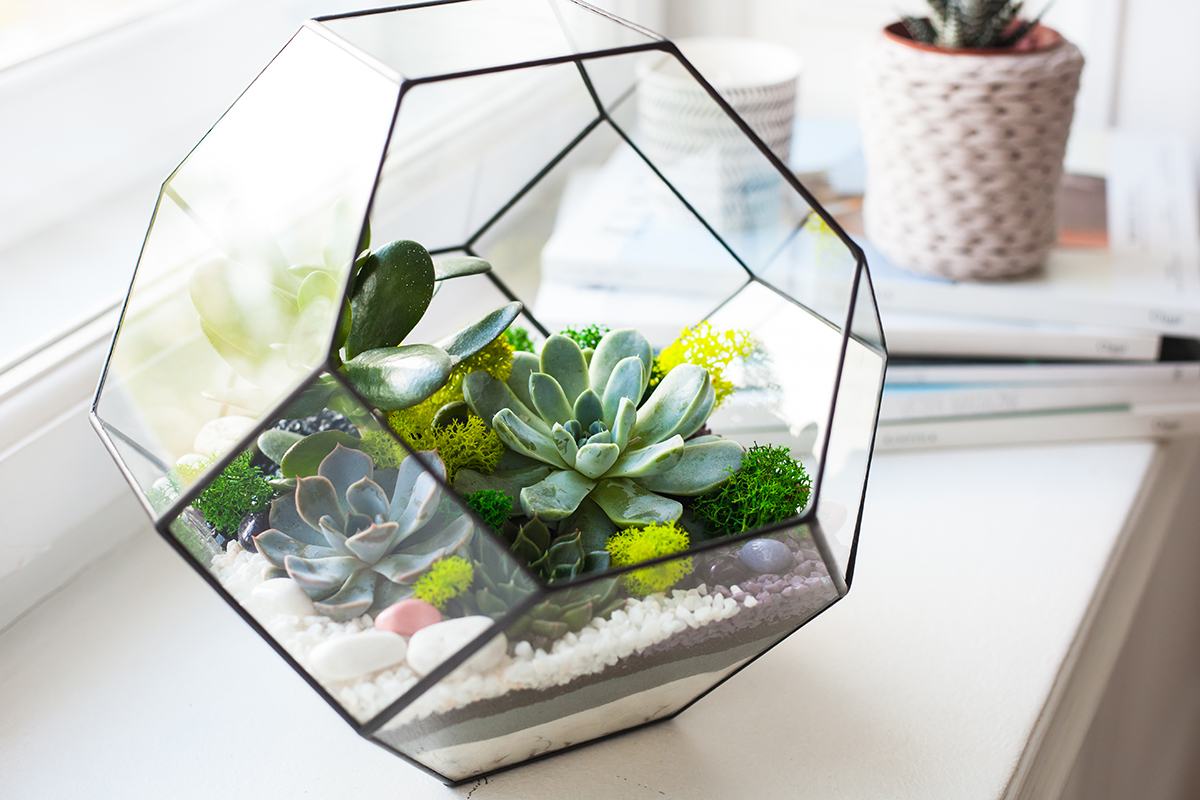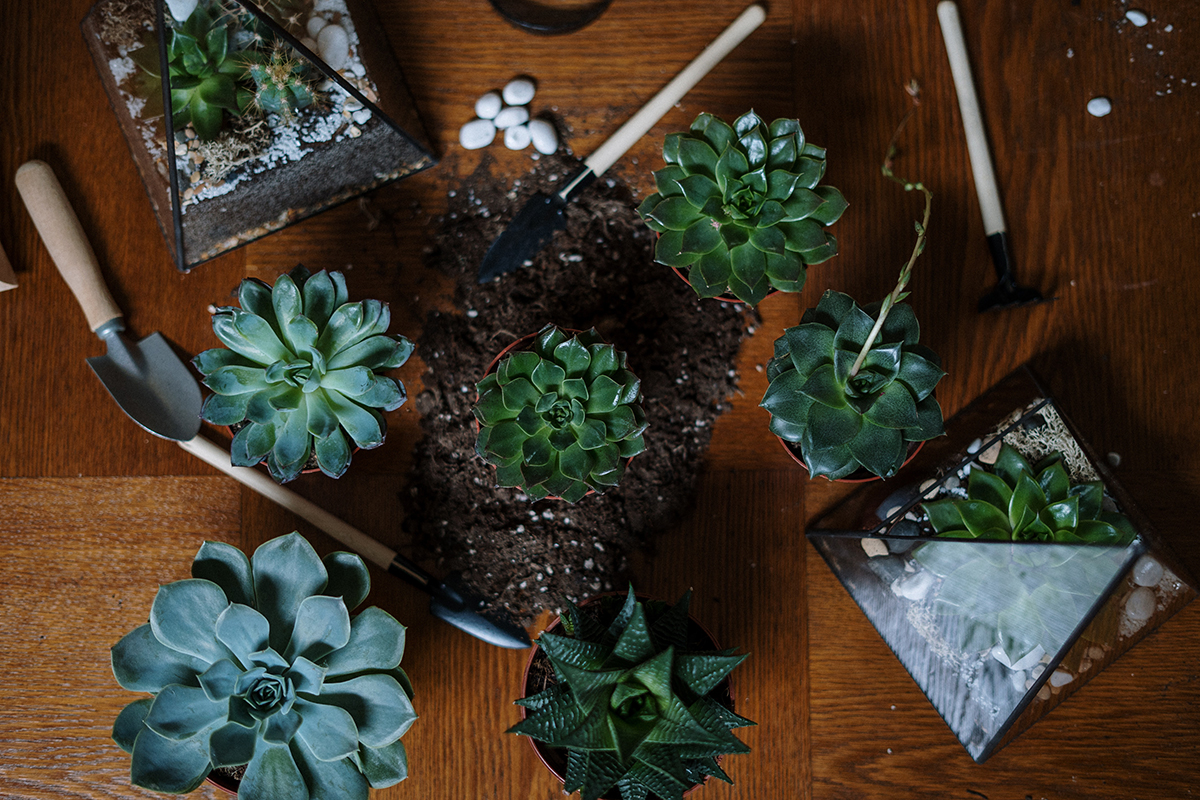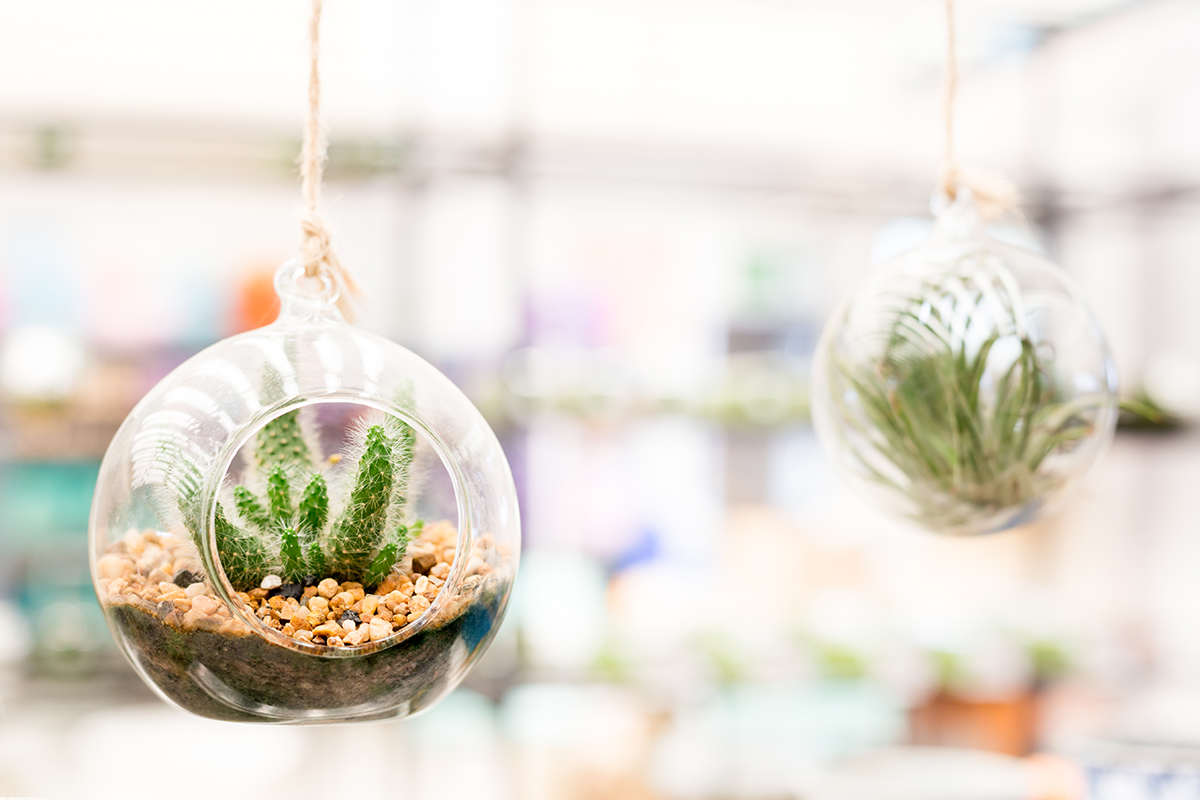A true beauty of nature, moss is truly captivating vegetation known for its simplistic and mysterious appearance. While most people love to stare at this green organism, very few know anything about the mass culture. It would be interesting and worthy to have them in your terrariums, for they can greatly enhance the setting of the terrarium. Furthermore, they can also provide a natural look that complements other life forms, as well as the plants that it contains. In the following sections, we will discover the many intricacies of the mosses and learn how to cultivate them to achieve the most beautiful terrariums.
What Is Moss, and How Is It Different Than Other Plants?
Mosses are a unique line of plant life that is differentiated from other plants. It is the only plant life form that has four distinct life cycles. These include; the gametophyte, the sporophyte, the spore, and the myrmecophyte.

1. No Vascular Tissues:
Unlike other plants, which possess vascular tissues, mosses do not have such. Although it looks green like other plants, mosses are not plants at all, as they lack the key features of plants. It would be most appropriate if mosses would be considered a close relative to the plants.
2. Organisms that Are Unicellular:
Mosses are organisms in their own right. However, they are by nature unicellular organisms, rarely come in contact with others of their kind. Despite the fact that the species may be underground, they typically keep a single living tissue that blends one cell with another.
How to Take Care of Terrarium Moss - 4 Necessary Steps:
The care of the moss, of course, extends your attention to the entirety of the terrarium. Although it’s easy to care for the moss, the terrarium, as a whole, requires greater attention than the moss alone. Therefore, in this article, we are going to discuss the essentials of moss cultural care, as well as the overall care of terrariums.
1. Understand the Types of Mosses:
There are two types of mosses; the most common of the two is the “hardy” moss or the epiphytic moss. This moss, unlike the fragile type, does not need a solid foundation to grow in. The hardy moss thrives in the forest and in the wild as a whole as it only grows on other plants or trees. In a terrarium, it is the most common of the mosses, and its ability to grow on the sides of terrariums alone makes it more practical to use in the home.
The second type of moss is fragile moss. It is quite resilient to the terrarium, but it requires a strong foundation as well as a host plant to grow on. If placed in a terrarium on the sides, it would slowly die off.
2. Need High Humidity and Shaded Place:
Like other plants, moss thrives in a highly humid environment. In terms of placing the terrarium plant, a shaded place is preferred. This makes sure that the plant part is protected from the sunlight. Once you place the terrarium under the right conditions, the plant will thrive and grow properly.
3. Watering: Don't Overdo it
Overwatering is quite a common problem when caring for a terrarium plant. Remember that since mosses are such delicate organisms, they need a great deal of moisture to thrive. However, at the same time, just as much as they need moisture, they are vulnerable to mold and fungus. Therefore, to actually water your terrarium, make sure that you don’t expose it too much to water.
4. Use Organic or Natural Potting Soil
While soil is one of the essentials that you need to consider when caring for your terrarium, the use of organic soil is more practical. Organic soil has the ability to absorb moisture, so it is perfect for creating a better environment for the moss. It is also safe to use because it has a multitude of microbes that cleanse the soil, as well as nutrients that encourage the growth of the moss.
Also, it is vital to note that you shouldn’t use fertilizers. Mosses, along with other plants, are plant organisms, and therefore, the use of fertilizers could be destructive to the environment. The best option would be to choose the right soil type and refrain from using fertilizers.
4 Best Moss for Terrariums:
Moss is an essential part of your terrarium. It is best to include it because everyone should have lush arrangements in their terrariums. Enlisted are the best moss for terrarium;

Bring the much-needed color and texture that the preserved reindeer moss gives to a setup terrarium—the 2 oz. A package of preserved reindeer moss is good for one terrarium, or it can be split between two terrariums. Look, you don’t have to keep your preserved reindeer mosses compact: you’re going to be placing them in a glass container that has a lid, so they don’t have to be as compact. If you want to make a statement, bring on the preserved reindeer moss, which fluffs out beautifully on top of a terrarium of succulents. Customers who have bought and used this preserved reindeer moss say that the color is vibrant and beautiful. Others say they’re nice and soft, and they come in carefully air sealed packages.

Do you want to enrich your terrarium with a little bit of Spanish moss? Then the 250 cubic inch container of Spanish moss is going to do the trick for you, unlike other mosses in other container sizes, like the 8.8 oz. Moss, the 250 cubic inch container of Spanish moss, has a unique shape to it. It unevenly covers the whole base, and it lumps together to create almost a sea anemone look. This can be used as a single moss in a terrarium or as an accent moss in a more tropical terrarium. Customers who have bought and used this product are happy with the look and effect their moss terrarium creates when it’s filled with colorful succulents, and they say it’s a good price for this container of Spanish moss.

Place this variety pack of mosses in your moss terrarium: that way, your terrarium’s going to look even more natural. This pack of mosses features the mostly sold mosses like dwarf pine, nodularin, and millipiuma. Plus, you’ll get the most colorful mosses out of this variety pack: olive, pink, burgundy, and blue pine. Also, out of this variety pack set are other mosses like curly, moor, and wavy. Customers who have bought and used this moss terrarium container are happy with how their moss terrariums turned out, and they also like how their mosses make the whole terrarium look more natural.

This is a moss terrarium accessory kit, so it’s mainly for your accessories and accents to the terrarium. It doesn’t quite have the moss, soil, and plant parts to create a terrarium by itself, but it does come with a lot of accessories, including some mini figurines, for you to utilize. This kit comes with a tree stump, arbor, beach stones, water, logs, river pebbles, twig, starfish, sand dollar, rock, sea urchin, and much more. Customers who have bought and used this kit say that it comes with a lot of small and cute accessories to scatter, but it’s just not enough moss to create a terrarium. Others say that the kits have great accessories for a terrarium, and it seems to be based on the whimsical side of terrarium making.
If you’ve considered moss terrariums, also called mossariums, this piece is for you. Regardless of whether you want mosses as the only plant in your mini-greenhouse or the total package, this article will guide you.
Here, you will find why mosses are one of the best plants to use for your terrariums. Also, you’ll find the best types to grow.
More importantly, this article includes tips to build and maintain mosses in your terrariums.
So, let’s get into the content already.
Why Moss Terrariums?
Mosses and terrariums are like a match made in heaven. The conditions for the two fit perfectly together. How?
For a start, terrariums are mini-gardens of slowly-growing plants. Beautifully, mosses fit that description. They can stay for years with the same height and width.
Also, terrariums are beautiful aids for your interior designs. Fortunately, mosses are naturally one of the most appealing plants. Their green color is very pleasing.
Lastly, mosses have low-maintenance worries. They do not require much water, soil, and light. They don’t even have a well-defined root system.
Almost like mosses aren’t even plants. But they are!
Thanks to those features, mosses fit all kinds of terrariums. They are the best fit for the closed types.
Besides the beauty and low-maintenance, mosses also absorb toxins. That means you’d enjoy safe interiors.
So, yes, mosses are a must for terrariums. However, there is “one but.” Huh?
There are over a thousand varieties of mosses. In other words, you could have a hard time deciding which to use.
Don’t worry. We’ve streamlined the list for you. Have a look!
7 Mosses You Should Consider Planting In Your Terrarium
Spoiler alert: there are no “best” mosses for your terrariums.
Before we get into the list, you should know there are two kinds of mosses:
- Acrocarpous mosses – grow in an unbranched, upright, and clumpy pattern. They are hardened slow-growers – can take up to 2 years to form a carpet. Acrocarps have zero tolerance for wet conditions – it could even kill them.
- Pleurocarpous mosses – grow in branched, prostrated, and creeping patterns. Unlike acrocarps, they grow fast and can double their size in just six months.
Also, pleurocarps can tolerate moist conditions. Some even prefer submerged soils.
Now you have a strong background in which the kind of mosses fit your needs and maintenance routines. So, let’s get back to the “list.”
Sheet Moss
Sheet moss is another popular terrarium plant. So much so that it is compatible with other types of ariums.
Often, homeowners use sheet mosses at the base of their terrarium to soak water and hold the gravels/stones in place. How?
Sheet mosses are pleurocarps. As such, they spread and fill the base of the containers.
Other name(s): Hypnum curvifolium
Cushion Moss
Cushion moss is another acrocarp. Surprisingly, it is predominant in marsh conditions.
Nevertheless, don’t overwater your cushion moss. Else, it will suffer rot.
Also, this moss needs adequate lighting. But such has to be from indirect sources. And it also prefers somewhat acidic soil.
Other names: Leucobryum glaucum, white or pillow moss
Java Moss
Java moss is another pleurocarp that can survive in a marshy environment. For that reason, it fits for both aquariums and terrariums.
However, watch how you water your java moss. Once a week is enough!
If you overwater the plant, you are risking rot.
Other name(s): Taxiphyllum barbieri
Star Moss
Star moss is our last pick for the acrocarps. Like the name, these clumpy plants grow in star-like shapes.
Also, star mosses tend to have spikes. In all, they bring exotic beauty to your terrarium.
Other name(s): Tortula ruralis

Sphagnum Moss
Sphagnum moss is somewhat flexible in nature. They don’t quite fit into the definition of an acrocarp, nor a pleurocarp.
Nevertheless, sphagnum mosses are just as beautiful as the other kinds of its group. Besides, they are low-maintenance and one of the trendy terrarium plants.

What next?
Let’s grow the listed mosses in your terrarium.
How To Grow Your Moss Terrariums?
We have separated this guide into steps for easy comprehension. Let’s begin!
Prepare Your Container
You can use any container. However, we’d advise you to go for a closed terrarium. Why?
Such aids are the best fit for the humidity that mosses love.
Add Your Drainage Aids
Containers don’t come with drainage holes. But mosses need those channels for air and water.
So, what you’d do is get gravel and stones. Once you do, you arrange these substrates decoratively at the base of your container.
Cover The Drainage Layers
Once the base is ready, cover the gravels and stones. For that, you can use dried moss-like sphagnum or a paper cut material.
Next, add soil on the coverings. Here, we advise you to get a multipurpose pot mix. It is neutral and best for all types of mosses.
Plant Your Moss
Now, plant your moss. You can pick any from our list that fits your plan or consult an expert.
Here, you should be careful and creative about how you plant your mosses. You can start with the pleurocarps to create a tender, forest-like environment. After, add the acrocarps for variety.
Water And Maintain Your Terrarium
The final phase is to water your newly-planted mosses. At least for the first three weeks, you should maintain a regular watering schedule.
After, you can reduce how often you water the plants. However, note that different mosses have varying moisture needs. So, consider that too.
As regards maintenance, move your container away from direct sunlight. It’s best to use a lit area in your room with indirect lighting.
Now, your moss terrarium is ready. Easy and fun, eh?
Conclusion
Moss is one of the essentials for the creation of a terrarium. It could be the only thing that you put in your terrarium to make it aesthetically appealing. Not only that, but it can also be used to fill in the empty spots so that the terrarium looks more natural. Decorating with moss is a great way to stay creative with your terrariums.
Choosing the right moss.
As you may already be aware, moss comes in many different species. Each of those species has different characteristics. As to which moss you choose, that will be determined by what exactly you want your moss terrarium to look like.
There are over 12,000 different species. A few, though, are quite popular for people looking to start their journey with moss terrariums. These include:
- Mood moss: If you want something that reminds you of the possibilities that can be found in grasslands, then this is the type of moss you should be looking at for your terrarium.
- Cushion moss: This type is loved for the fact that it is very compact.
The above types of moss can be described as being clumpy. This best describes how they look like, and what you will have to do to get them to look as you want.
If that is not your thing, then there is another type that makes things a little bit easier. These can be described as carpeting mosses. Some of the members of this class include:
- Sheet moss: This is perhaps the most popular type of moss employed in terrariums. This is because they tend to grow outwards and cover an area, sort of like a carpet. They are also very easy to work with.
- Java moss: If you are going to have a plant that needs a lot of water, then having a type of moss that can easily handle excess amounts of water would be a great addition to that terrarium. Java moss is at home both in deep water and on land.
Getting Started With Moss.
Moss is the perfect material for adding that base texture to a terrarium. Depending on the type of moss you go for, you could easily induce different kinds of effects in each terrarium. The variety could be great for your home.
Moss in terrariums is typically used as cover over a layer of rocks. Some people are comfortable with adding a layer of soil over the rocks, then adding the moss on top as a form of mulch.
While adding moss to a terrarium, it would be best to give them a gentle squeeze into the soil. This enables their root like structures, known as rhizoids, to be pushed into the soil.
This will begin the process of acclimatization for the moss. This period typically takes around three weeks and it is a crucial period.
In this period, it would be best if you watered the moss periodically, just to keep them sufficiently hydrated.
Caring for moss.
Yes, moss are plants, but not your typical water-and-go-away plants. The conditions they should be in don’t have to be precise, but there are limits as to what you should and should not do.
For one, as moss does not have roots, it would be best to water your moss as evenly as you can. This will help keep the entire moss hydrated, rather than have one side green and the other slowly turning brown.
A good way to take care of moss is to have it in a closed terrarium where there is plenty of humidity and moisture. You may only need to water it once or twice a month.
Moss will not need direct exposure to the sun to get its photosynthesis process going. If anything, filtered or diffused sunlight is actually the best way for moss to get going on photosynthesis. This is a similar environment to how it is found in forests.
Moss grows mostly even but may need some manicuring once in a while. You will easily notice this as moss starts to look shabby when it is not growing as even as it should. This process can usually take time as moss isn’t the fastest growing plant out there.
To keep your moss looking its best, all it will need is exposure to light and water. Moss will usually take all the nutrients it needs from the water and air through its leaves.
Now that you have a basic foundation of what moss can do for you, it’s time to build your first moss terrarium.








